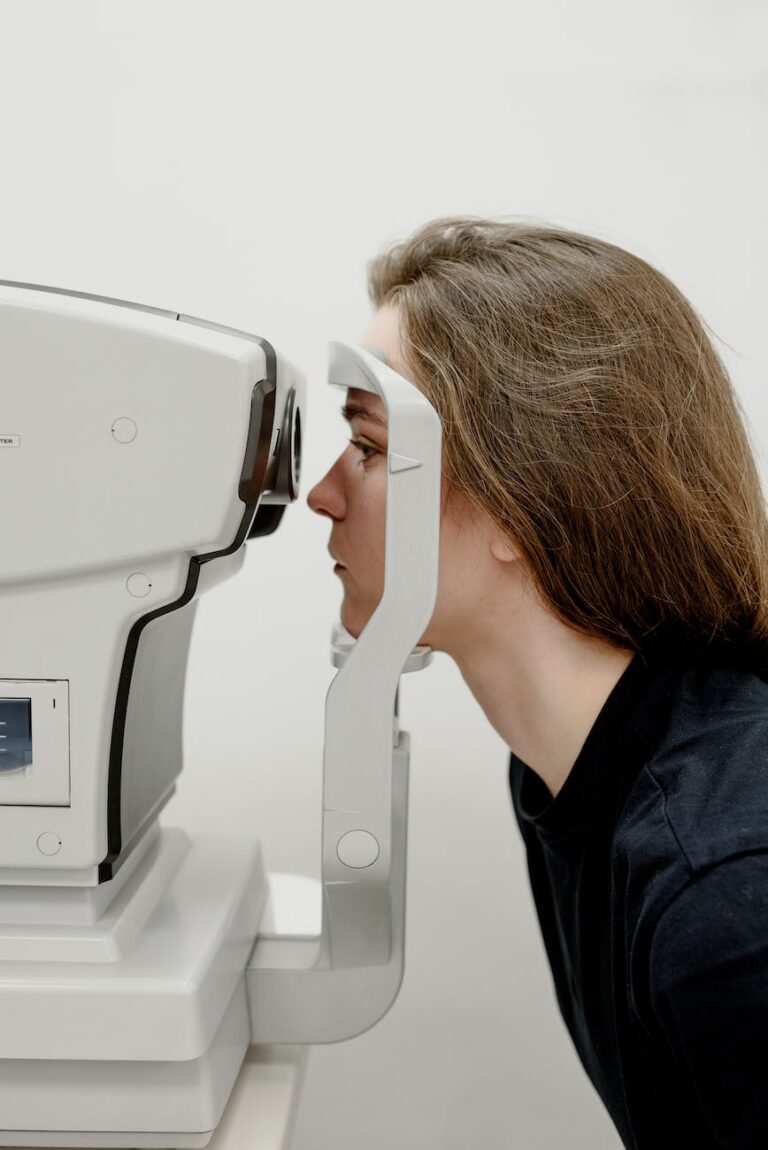Understanding Engine Diagnostics
To keep your car running smoothly and efficiently, it’s important to understand the concept of engine diagnostics. Engine diagnostic reports play a crucial role in identifying and addressing issues with your vehicle’s engine, allowing for timely repairs and maintenance. Let’s explore what engine diagnostic reports are and why they are essential.
What Are Engine Diagnostic Reports?
Engine diagnostic reports provide valuable information about the health and performance of a vehicle’s engine. These reports are generated through a process that involves connecting specialized diagnostic tools and equipment to the vehicle’s onboard computer system. By retrieving error codes and other data, the diagnostic tools provide a comprehensive report on the engine’s condition.
The data collected during the diagnostic process includes information about various engine components, such as the fuel system, ignition system, and emission control system. Engine diagnostic reports can identify issues such as faulty sensors, misfires, and fuel system problems, helping automotive technicians pinpoint the root cause of engine problems (Automotive Repair Loveland).
Importance of Engine Diagnostics
Modern vehicles rely heavily on computer systems for engine control, and engine diagnostic reports leverage this technology to provide accurate and detailed information about the engine’s condition. These reports are essential for several reasons:
-
Efficient Troubleshooting and Diagnosis: By analyzing the data provided by an engine diagnostic report, automotive technicians can diagnose the root cause of engine problems more efficiently, saving time and reducing guesswork. The detailed information in the report helps them identify the specific components or systems that require attention. This targeted approach streamlines the troubleshooting process and ensures that repairs are performed accurately.
-
Preventive Maintenance and Cost Savings: Regular engine diagnostic reports can help identify and address potential issues before they become major problems. By detecting and addressing small issues early on, you can prevent them from escalating into more significant and costly repairs. Engine diagnostic reports also allow you to stay on top of recommended maintenance tasks, ensuring that your vehicle remains in optimal condition.
Engine diagnostic reports provide valuable insights into the health of your car’s engine, allowing you to take proactive measures to maintain its performance. By addressing issues promptly and staying informed about your engine’s condition, you can ensure a longer lifespan for your vehicle and potentially save on expensive repairs in the long run.
In the next sections, we will delve deeper into how engine diagnostic reports work, the benefits they offer, and the key components analyzed during the diagnostic process. Stay tuned to learn more about this essential aspect of car maintenance.
How Engine Diagnostic Reports Work
To effectively understand and address issues with your vehicle’s engine, it is important to grasp how engine diagnostic reports function. These reports rely on the role of computer systems and specialized diagnostic tools and equipment to provide valuable insights into the health and performance of your engine.
Role of Computer Systems in Engine Diagnostics
Modern vehicles heavily rely on computer systems for engine control and monitoring. These computer systems continuously collect data from various sensors and components within the engine to ensure optimal performance. Engine diagnostic reports leverage this technology by accessing and interpreting the data provided by the onboard computer system.
By connecting to the vehicle’s onboard computer system, diagnostic tools can retrieve valuable information and error codes known as Diagnostic Trouble Codes (DTCs). These codes provide specific details about potential issues or malfunctions within the engine J.D. Power. The computer systems in your vehicle constantly monitor engine parameters, such as fuel mixture, ignition timing, and emission control, and store these codes when a problem is detected Automotive Repair Loveland.
The Diagnostic Trouble Codes serve as a starting point for identifying the root cause of engine problems. They provide valuable insights for automotive technicians, allowing them to efficiently diagnose issues and determine the necessary repairs Capital One.
Diagnostic Tools and Equipment
Engine diagnostic reports require specialized diagnostic tools and equipment to retrieve and interpret the data provided by the vehicle’s computer system. These tools connect to the vehicle’s onboard diagnostic (OBD) port, which is typically located under the dashboard or near the driver’s seat.
One commonly used tool is the OBD scanner or code reader. This handheld device connects to the OBD port and retrieves the stored Diagnostic Trouble Codes. The scanner then displays the codes on its screen, allowing technicians to interpret and analyze the data Capital One. The scanner may also provide additional features and functions, such as live data streaming and the ability to clear codes after repairs have been made.
Other diagnostic tools and equipment may include more advanced systems, such as engine diagnostic machines and software, which provide comprehensive analysis and reporting capabilities. These tools allow for more in-depth monitoring and testing of various engine components, aiding in the diagnosis and resolution of complex issues Automotive Repair Loveland.
It is essential to note that the accuracy and reliability of engine diagnostic reports depend on the quality and capabilities of the diagnostic tools and equipment used. Professionals in the automotive industry invest in reliable and up-to-date tools to ensure accurate diagnoses and efficient repairs.
By understanding the role of computer systems and the use of diagnostic tools and equipment, you can gain insights into how engine diagnostic reports work. These reports serve as valuable tools for identifying and addressing engine issues promptly, ultimately enhancing the performance and longevity of your vehicle.
Benefits of Engine Diagnostic Reports
Engine diagnostic reports play a crucial role in maintaining the health and performance of your car’s engine. These reports provide valuable information about the condition of various components and systems, allowing for efficient troubleshooting and diagnosis. Let’s explore the benefits of engine diagnostic reports in more detail.
Efficient Troubleshooting and Diagnosis
By analyzing the data provided by an engine diagnostic report, automotive technicians can diagnose the root cause of engine problems more efficiently, saving time and reducing guesswork (Automotive Repair Loveland). The report provides valuable insights into the performance of different components, such as the fuel system, ignition system, and emission control system. With this information, technicians can identify any abnormalities or malfunctions and determine the most effective repair or maintenance solutions.
Engine diagnostic reports often include diagnostic trouble codes (DTCs), which are specific codes that indicate the presence of a problem or fault in a particular system or component. These codes serve as a starting point for technicians, guiding them towards the area of concern and aiding in the diagnosis process. By having access to this detailed information, technicians can quickly pinpoint issues and develop a targeted repair plan.
Preventive Maintenance and Cost Savings
Regular engine diagnostic reports can help identify and address potential issues before they become major problems, potentially preventing costly repairs and breakdowns (Automotive Repair Loveland). The reports provide valuable insights into the health of your engine, allowing you to take proactive measures to maintain its performance and prevent further damage.
By addressing minor issues early on, you can avoid the need for extensive repairs that may result from neglected problems. This not only saves you money in the long run but also helps to ensure the longevity and reliability of your vehicle. With the information provided by engine diagnostic reports, you can prioritize preventive maintenance tasks and address any potential concerns promptly.
Furthermore, engine diagnostic reports can help optimize your car’s fuel efficiency and reduce emissions. By identifying inefficiencies or malfunctions in the fuel system or emission control system, you can take corrective actions to improve fuel economy and reduce your environmental impact.
In summary, engine diagnostic reports offer efficient troubleshooting and diagnosis, allowing technicians to address engine problems with precision. Regular analysis of these reports helps prevent major breakdowns, saves costs, and supports proactive maintenance. By utilizing engine diagnostic reports, you can ensure the health and longevity of your car’s engine, while also optimizing performance and reducing the risk of unexpected issues.
Car Diagnostic Tests vs. Engine Diagnostic Reports
When it comes to identifying and resolving issues with your vehicle, it’s important to understand the distinction between car diagnostic tests and engine diagnostic reports. While both serve the purpose of diagnosing problems, they differ in scope and focus.
Overview of Car Diagnostic Tests
Car diagnostic tests are digital analyses of a car’s computer systems and components. These tests are typically performed when a vehicle’s dashboard shows a “check engine” signal or other warning light illumination. They can also be performed as part of regular maintenance appointments. During a car diagnostic test, various aspects of the vehicle are evaluated, including the engine, transmission, ignition coils, fuel injector, and oxygen sensors (J.D. Power). The test provides valuable information about the specific problem, often in the form of error codes, which can help identify the location of an issue or potential error (Sun Auto Service).
Car diagnostic tests are usually performed using a basic scanner and diagnostic software, and they typically take just a few minutes to complete. While these tests are not always perfectly accurate and cannot always pinpoint the precise problem, they provide valuable insights that help mechanics narrow down potential issues and take appropriate action (J.D. Power). By detecting errors or malfunctions in components and integrated systems early on, car diagnostic tests can help prevent more serious risks and costly repairs (Link).
Distinction Between Car and Engine Diagnostics
Engine diagnostic reports, on the other hand, focus specifically on the engine’s performance and health. These reports provide a comprehensive analysis of the engine’s components and systems, including the fuel system, ignition system, and emission control. Engine diagnostic reports go beyond the basic error codes provided by a car diagnostic test, providing detailed data stream and sensor readings that allow for a deeper understanding of the engine’s condition and potential issues (engine diagnostics).
While car diagnostic tests assess the overall health of the vehicle, engine diagnostic reports dive specifically into the engine’s functionality. This specialized focus enables more efficient troubleshooting and diagnosis, leading to quicker and more accurate repairs. By addressing engine problems promptly, car owners can prevent further damage and potentially save on costly repairs in the long run (engine diagnostic service).
In summary, car diagnostic tests provide a general overview of the vehicle’s systems, while engine diagnostic reports concentrate specifically on the engine’s performance. Both methods play a crucial role in identifying and addressing issues, but engine diagnostic reports offer a more specialized and detailed analysis of the engine’s condition, enabling more effective maintenance and repairs.
To access and utilize engine diagnostic reports, specialized tools like engine diagnostic scanners and software are required. These tools allow for the interpretation of diagnostic trouble codes (DTCs) and the analysis of data stream and sensor readings. By leveraging these reports, car owners and mechanics can make informed decisions regarding the maintenance and repair of the engine, ensuring optimal performance and longevity.
Common Components Analyzed in Engine Diagnostics
Engine diagnostics play a crucial role in identifying and addressing issues with a vehicle’s engine. By analyzing various components, engine diagnostic reports provide valuable insights into the health and performance of the engine. Here are some common components that are analyzed during engine diagnostics:
Fuel System Analysis
The fuel system is responsible for delivering the right amount of fuel to the engine for combustion. During engine diagnostics, the fuel system is thoroughly analyzed to ensure proper functioning. This includes checking the fuel injectors, fuel pressure, fuel pump, and fuel lines for any signs of malfunction or blockage. Issues with the fuel system can lead to poor engine performance, decreased fuel efficiency, and even engine misfires.
Ignition System Evaluation
The ignition system is responsible for igniting the air-fuel mixture in the engine cylinders, initiating the combustion process. Engine diagnostics assess the ignition system to ensure that it is functioning optimally. This includes analyzing components such as spark plugs, ignition coils, and ignition timing. Problems with the ignition system can result in engine misfires, difficulty starting the engine, and reduced power output.
Emission Control Inspection
Emission control is a critical aspect of engine performance and environmental impact. During engine diagnostics, the emission control system is thoroughly inspected. This includes analyzing components such as oxygen sensors, catalytic converters, and the exhaust system. The emission control system helps reduce harmful emissions and ensures compliance with environmental regulations. Issues with the emission control system can lead to increased pollution levels and potential regulatory violations.
By analyzing these common components during engine diagnostics, technicians and mechanics can pinpoint any potential issues or malfunctions. The data gathered from the diagnostic process allows them to make informed decisions regarding necessary repairs or maintenance actions. Engine diagnostic reports provide a comprehensive overview of the performance and condition of the engine, helping to streamline the troubleshooting process and ensure optimal engine health.
For accessing and utilizing engine diagnostic reports, specialized diagnostic tools and equipment such as car diagnostic scanners are used. These tools connect to the vehicle’s onboard computer system, retrieve error codes and other data, and generate detailed reports. These reports can then be interpreted to address any identified issues and perform the required repairs or maintenance.
Understanding the information provided in engine diagnostic reports is crucial for effective vehicle maintenance. It is recommended to consult with a professional technician or mechanic who can interpret the data and provide appropriate guidance. By leveraging the power of engine diagnostic reports, car owners can ensure the longevity and optimal performance of their vehicles.
Interpreting Engine Diagnostic Reports
Once you have obtained an engine diagnostic report, it’s crucial to understand how to interpret the information it provides. This section will cover two key aspects of interpreting engine diagnostic reports: understanding Diagnostic Trouble Codes (DTCs) and analyzing data stream and sensor readings.
Understanding Diagnostic Trouble Codes (DTCs)
Diagnostic Trouble Codes (DTCs) are error codes retrieved by the scanning tool used during the engine diagnostic process. These codes indicate specific issues or malfunctions in the engine (J.D. Power). DTCs are standardized across all vehicles, making it easier for mechanics to interpret and diagnose the issue (Capital One).
Each DTC consists of a combination of letters and numbers that represent a particular problem or malfunction in the engine. These codes provide a starting point for identifying the underlying issue. By referring to a comprehensive database or using diagnostic software, you can obtain a description of the problem associated with a specific DTC (source).
For example, a DTC like P0301 indicates a misfire in cylinder 1, while P0171 may indicate a lean fuel mixture. By understanding the meaning of these codes, you can gain insights into the nature of the problem and determine the appropriate course of action.
Analyzing Data Stream and Sensor Readings
In addition to Diagnostic Trouble Codes, an engine diagnostic report may provide data stream and sensor readings. These readings offer valuable information about the performance and condition of various engine components.
Data stream readings provide real-time data from the engine’s sensors, such as the oxygen sensor, mass air flow sensor, or coolant temperature sensor. By analyzing these readings, you can identify irregularities or abnormalities that may point to specific issues. For example, if the oxygen sensor reading indicates a rich fuel mixture, it may suggest a problem with the fuel delivery system.
Sensor readings, such as engine temperature, oil pressure, or voltage levels, can also help diagnose potential problems. Comparing these readings to the manufacturer’s specifications can reveal deviations that may require attention.
Interpreting the data stream and sensor readings requires a good understanding of the normal operating parameters for your specific vehicle. Consult the vehicle’s manual or seek professional advice to ensure accurate interpretation of the readings.
By comprehending Diagnostic Trouble Codes and analyzing data stream and sensor readings, you can gain valuable insights into the health of your engine. However, it’s essential to remember that engine diagnostics should be carried out by trained professionals with the necessary tools and expertise. They have the knowledge and experience to interpret the diagnostic reports accurately and recommend appropriate actions for repairs or maintenance.
To access and utilize engine diagnostic reports, you will need an OBD scanner or code reader. Learn more about these tools and how to interpret and act upon diagnostic reports in our article on car diagnostic scanners.
Remember, engine diagnostics play a vital role in identifying and resolving issues early, ensuring the optimal performance and longevity of your vehicle. Regularly monitoring and attending to engine health can prevent more extensive and costly repairs down the road.
Accessing and Utilizing Engine Diagnostic Reports
When it comes to maintaining the health of your car’s engine, engine diagnostic reports play a crucial role. These reports provide valuable information about the performance and condition of your engine, helping you identify specific issues and make informed decisions regarding repairs and maintenance. In this section, we will explore the tools used to access these reports and how to interpret and act upon them.
OBD Scanners and Code Readers
To access an engine diagnostic report, you will need an OBD scanner or code reader. These devices are designed to connect to your vehicle’s onboard diagnostic (OBD) port and retrieve the stored codes. The OBD port is typically located under the dashboard, near the steering wheel.
OBD scanners and code readers come in various forms, ranging from handheld devices to smartphone apps. They are equipped with the necessary software and hardware to communicate with your vehicle’s onboard computer system. By connecting the scanner or reader to the OBD port and following the device’s instructions, you can retrieve the engine diagnostic report.
When choosing an OBD scanner or code reader, consider factors such as compatibility with your vehicle’s make and model, ease of use, and additional features. It’s important to select a device that can retrieve and interpret the specific codes relevant to your engine’s make and model. For a wide range of OBD scanners and code readers, visit our article on car diagnostic scanners.
Interpreting and Acting Upon Diagnostic Reports
Once you have accessed the engine diagnostic report, it’s time to interpret the information and take appropriate action. The report will include a combination of letters and numbers known as diagnostic trouble codes (DTCs). These codes represent specific problems or malfunctions in the engine, allowing you to pinpoint the issue.
To interpret the DTCs, you can refer to a standardized list of codes, which are available online or in the user manual of your OBD scanner or code reader. Each code corresponds to a specific problem, providing valuable insights into the nature of the issue. For a comprehensive understanding of commonly encountered codes, refer to our article on engine diagnostic codes.
Depending on the severity and urgency of the problem indicated by the DTCs, you may choose to address the issue yourself if it is within your skill level or seek professional assistance from a mechanic or technician. If the problem requires immediate attention or is beyond your capabilities, it’s advisable to consult a qualified professional to ensure proper diagnosis and repair.
It’s worth noting that engine diagnostic reports not only help in identifying existing issues but also provide valuable insights for preventive maintenance. By regularly accessing and reviewing the diagnostic reports, you can stay proactive in addressing potential problems before they escalate, ultimately saving on costly repairs. Properly utilizing the information from the diagnostic reports can help extend the lifespan of your engine and reduce the risk of unexpected breakdowns or failures.
In conclusion, accessing and utilizing engine diagnostic reports is a vital part of car maintenance. OBD scanners and code readers enable you to retrieve the reports, while interpreting the diagnostic trouble codes allows you to identify specific issues. By acting upon the information provided in the reports, you can make informed decisions regarding repairs and maintenance, ensuring the longevity and optimal performance of your car’s engine.







